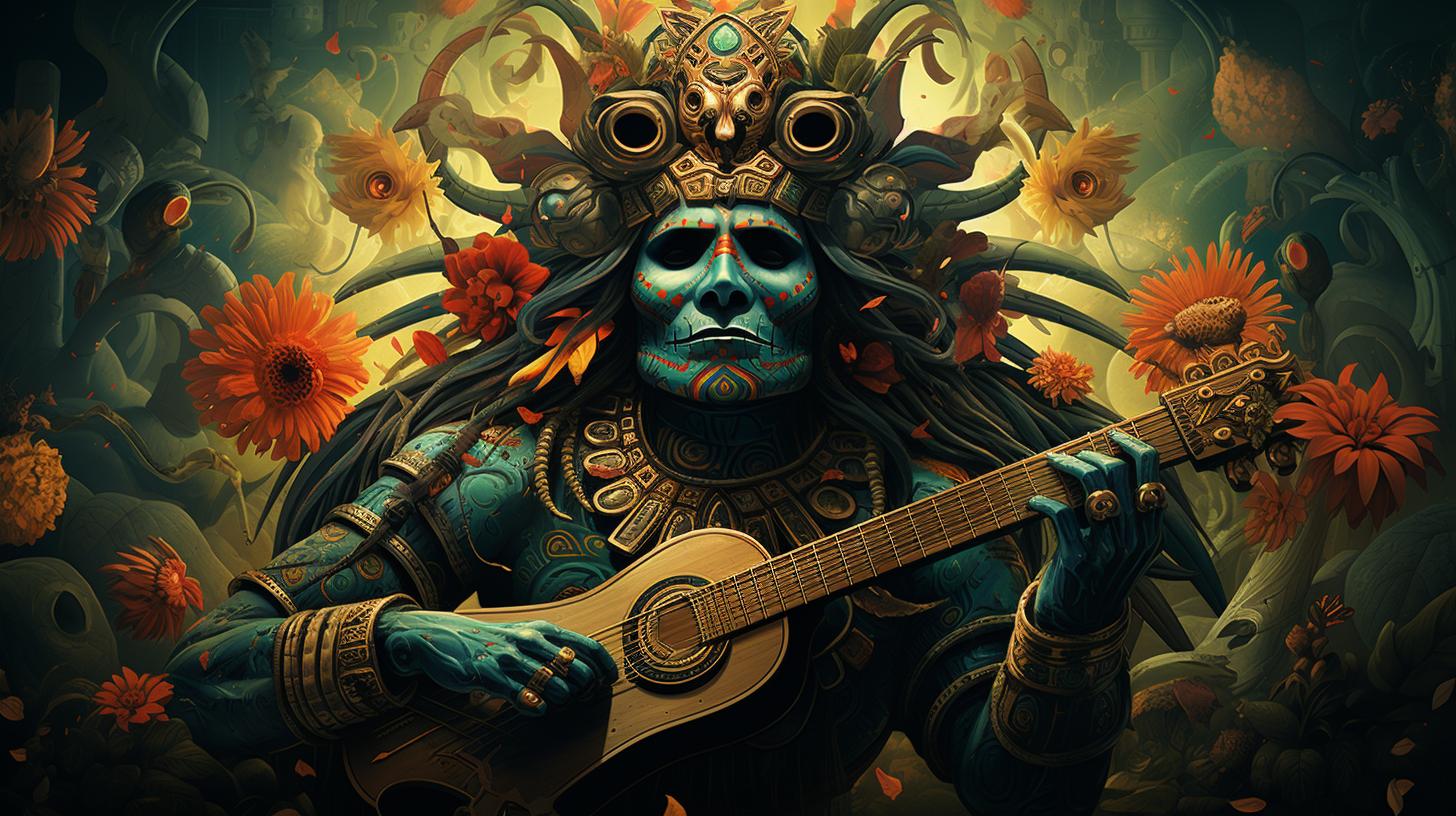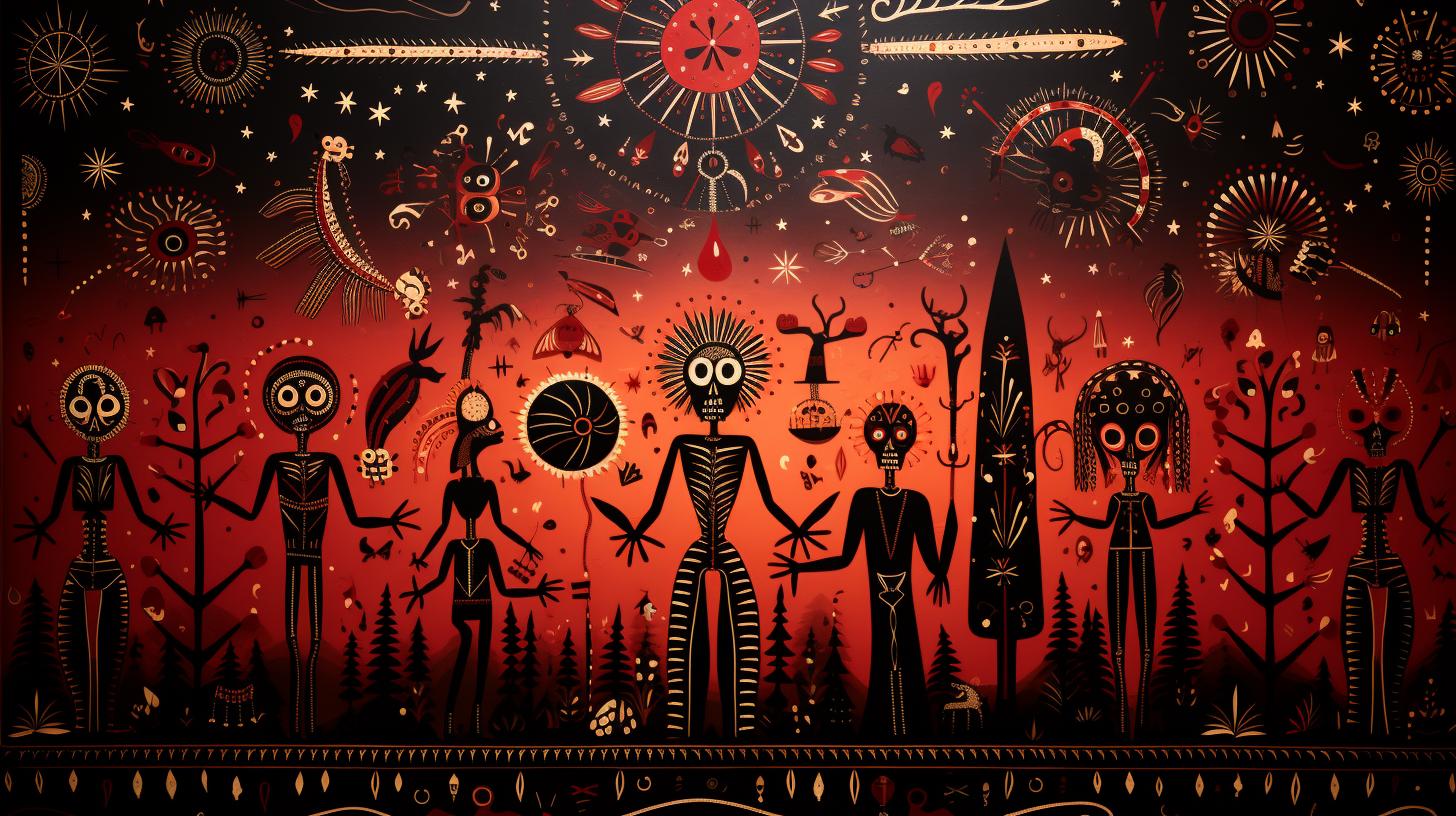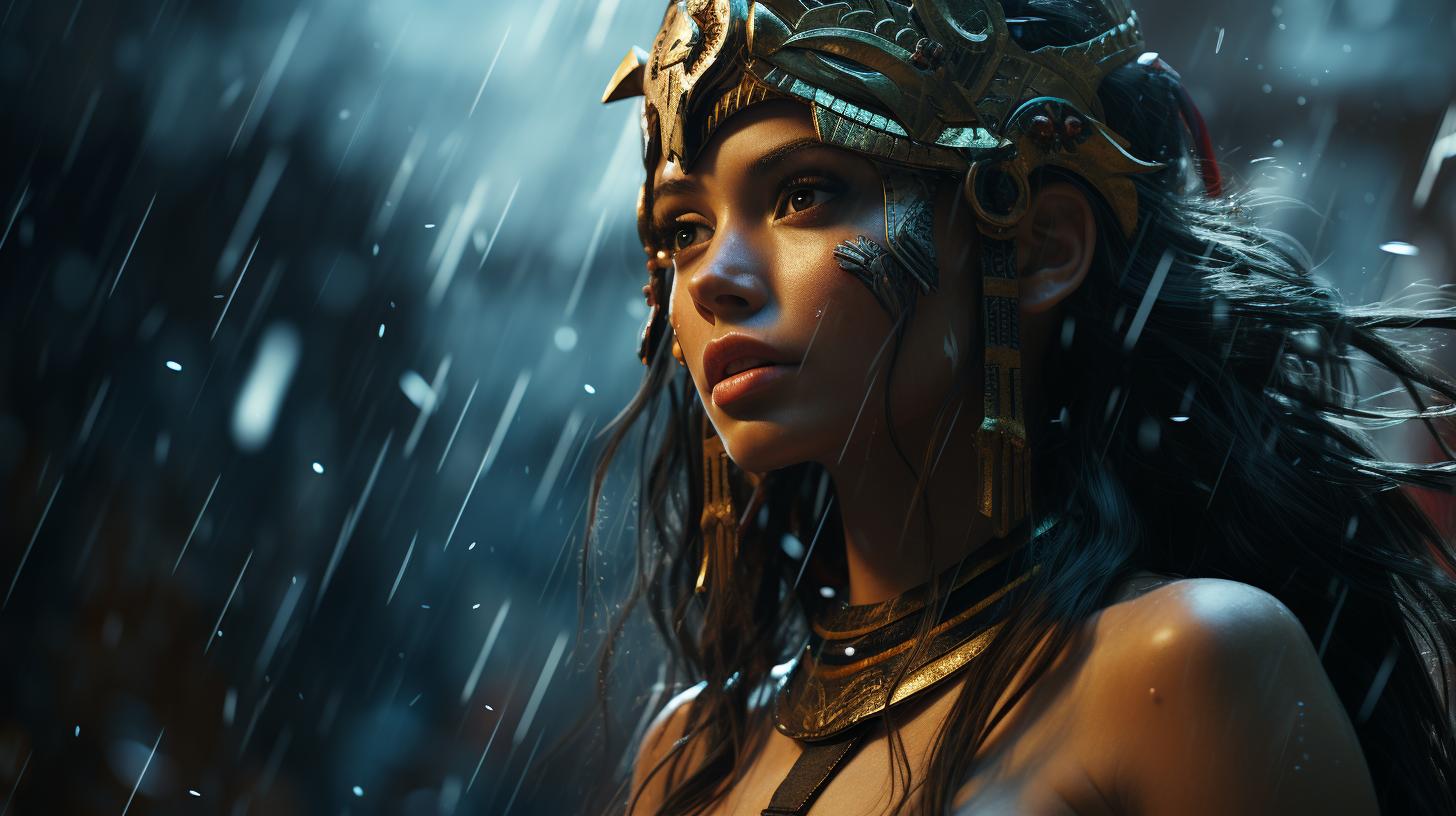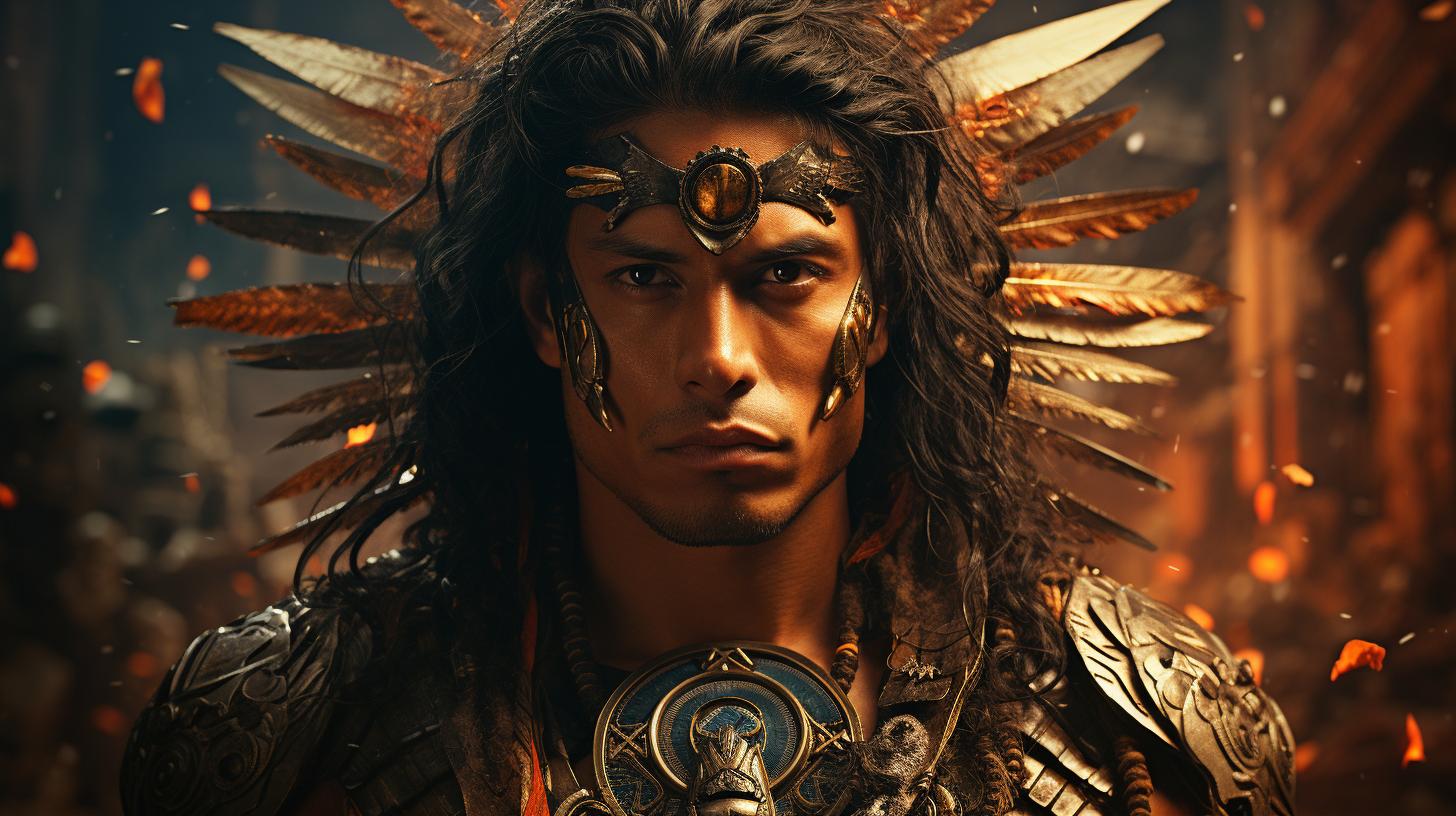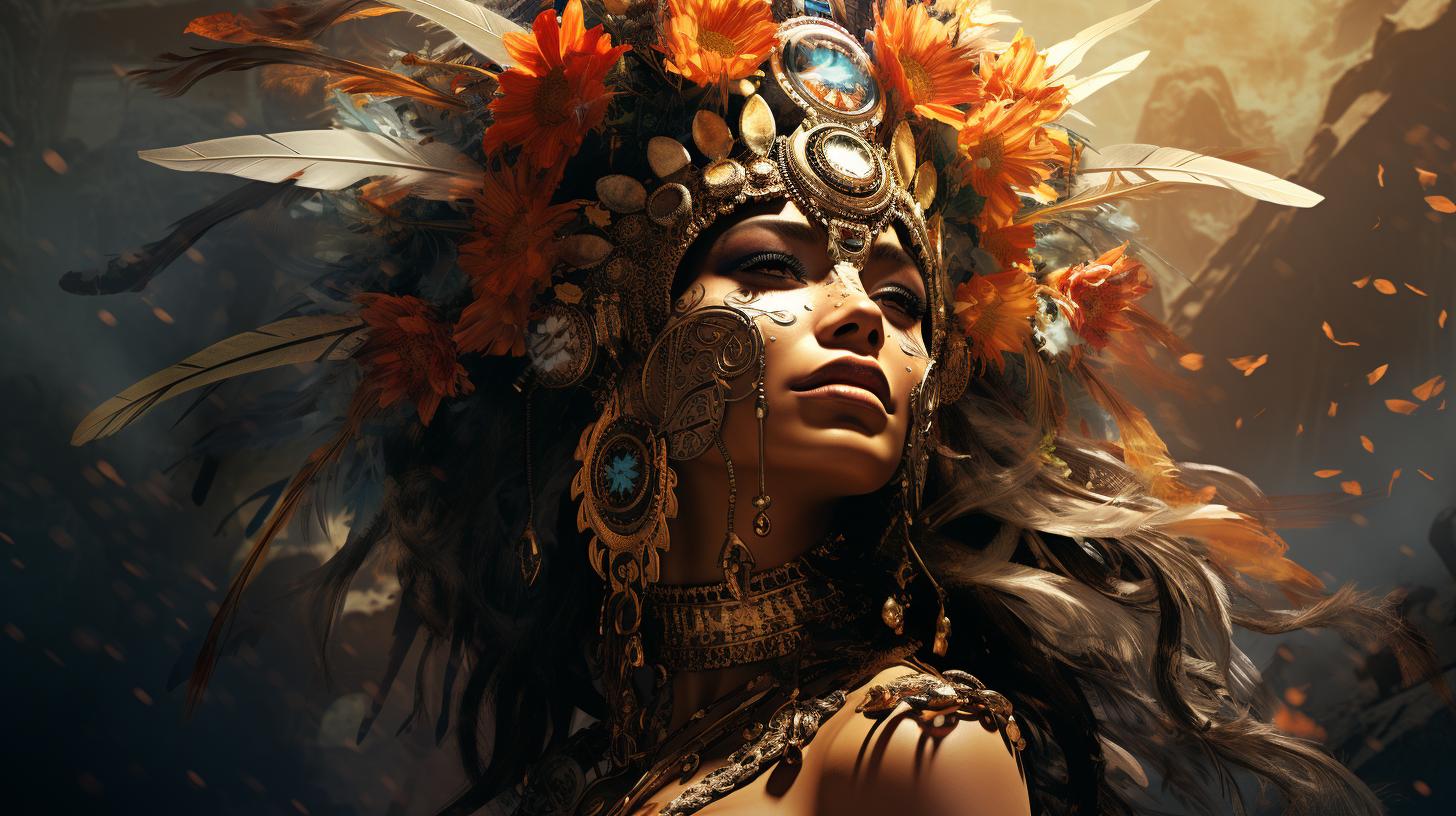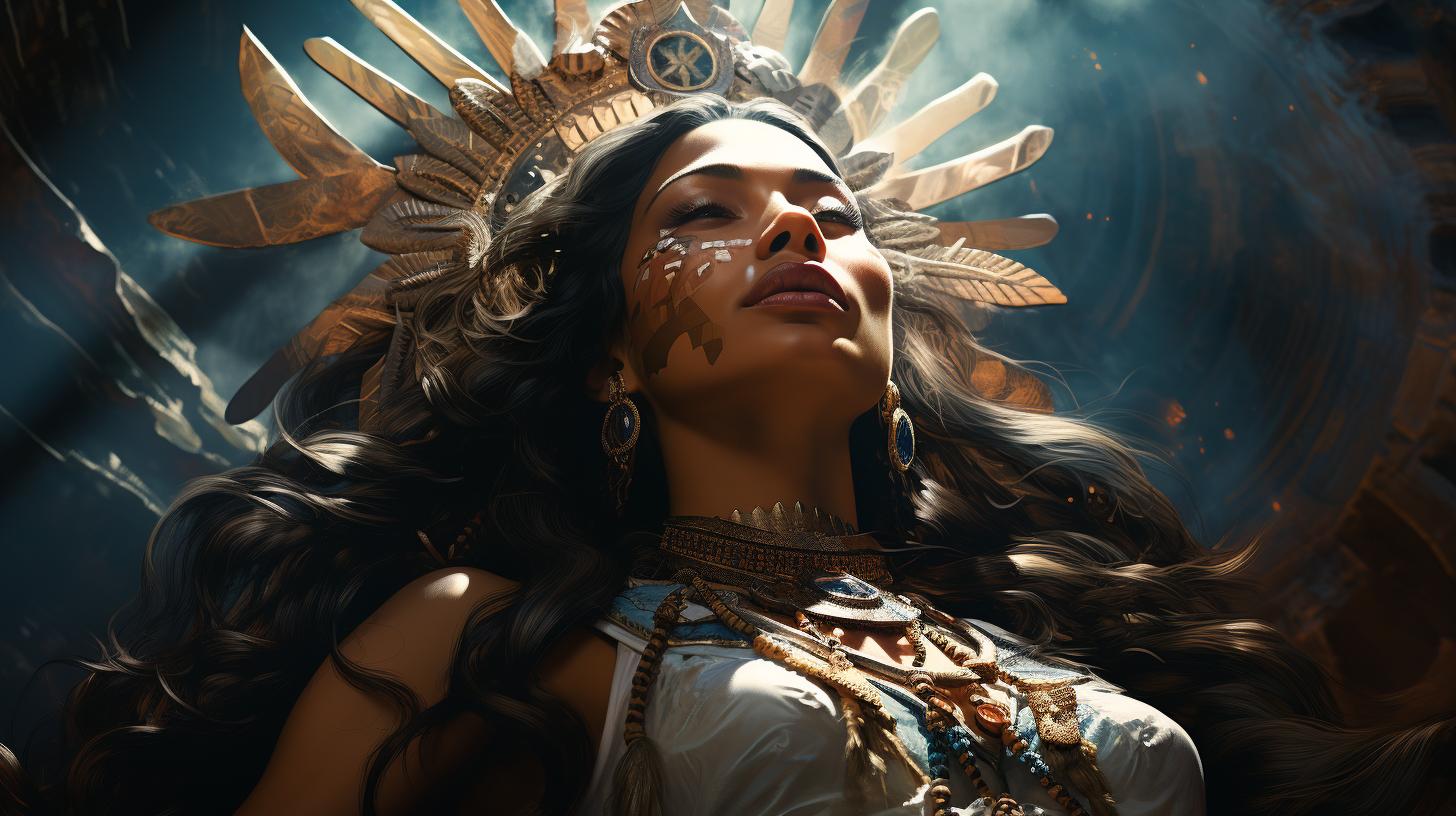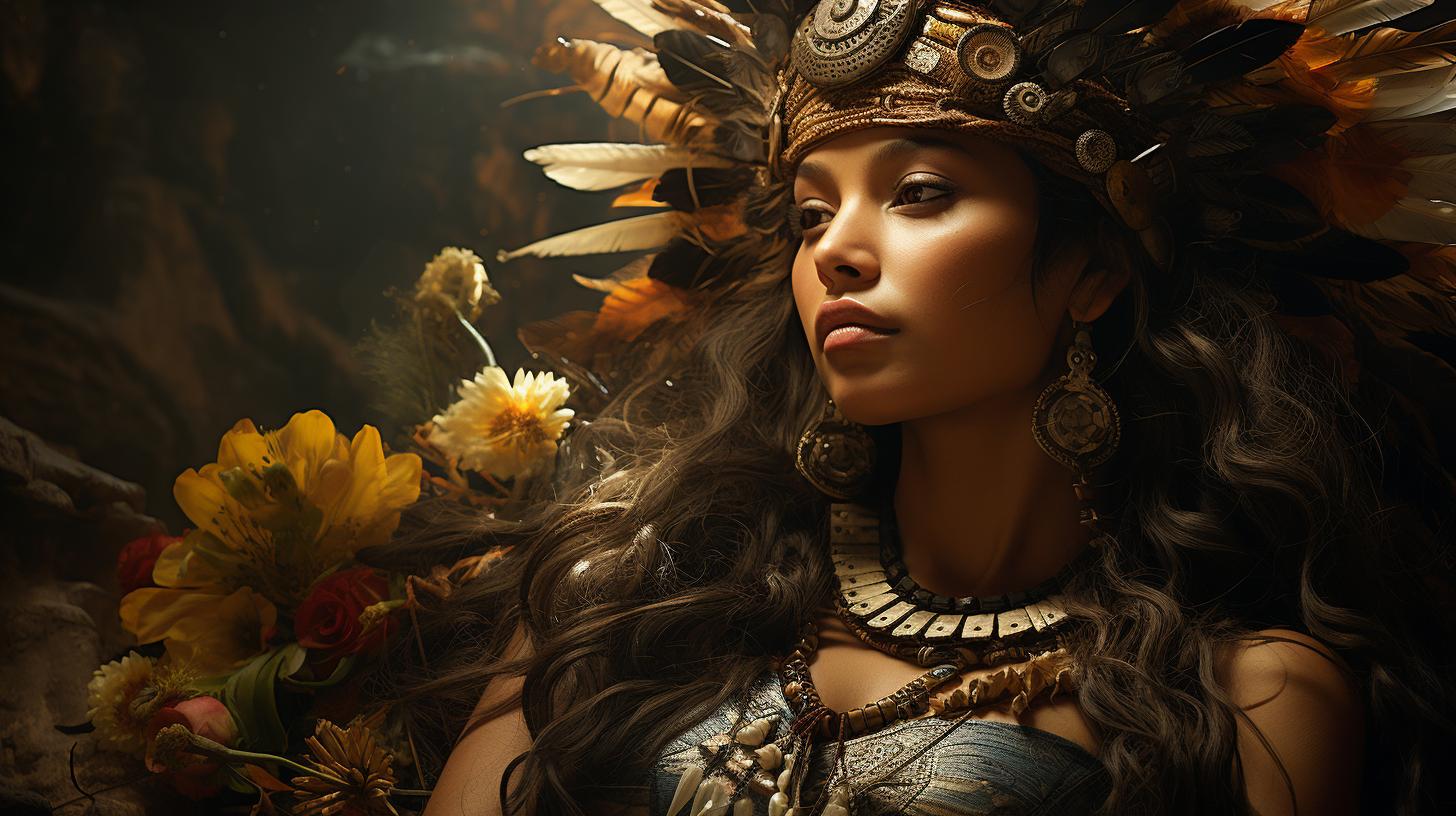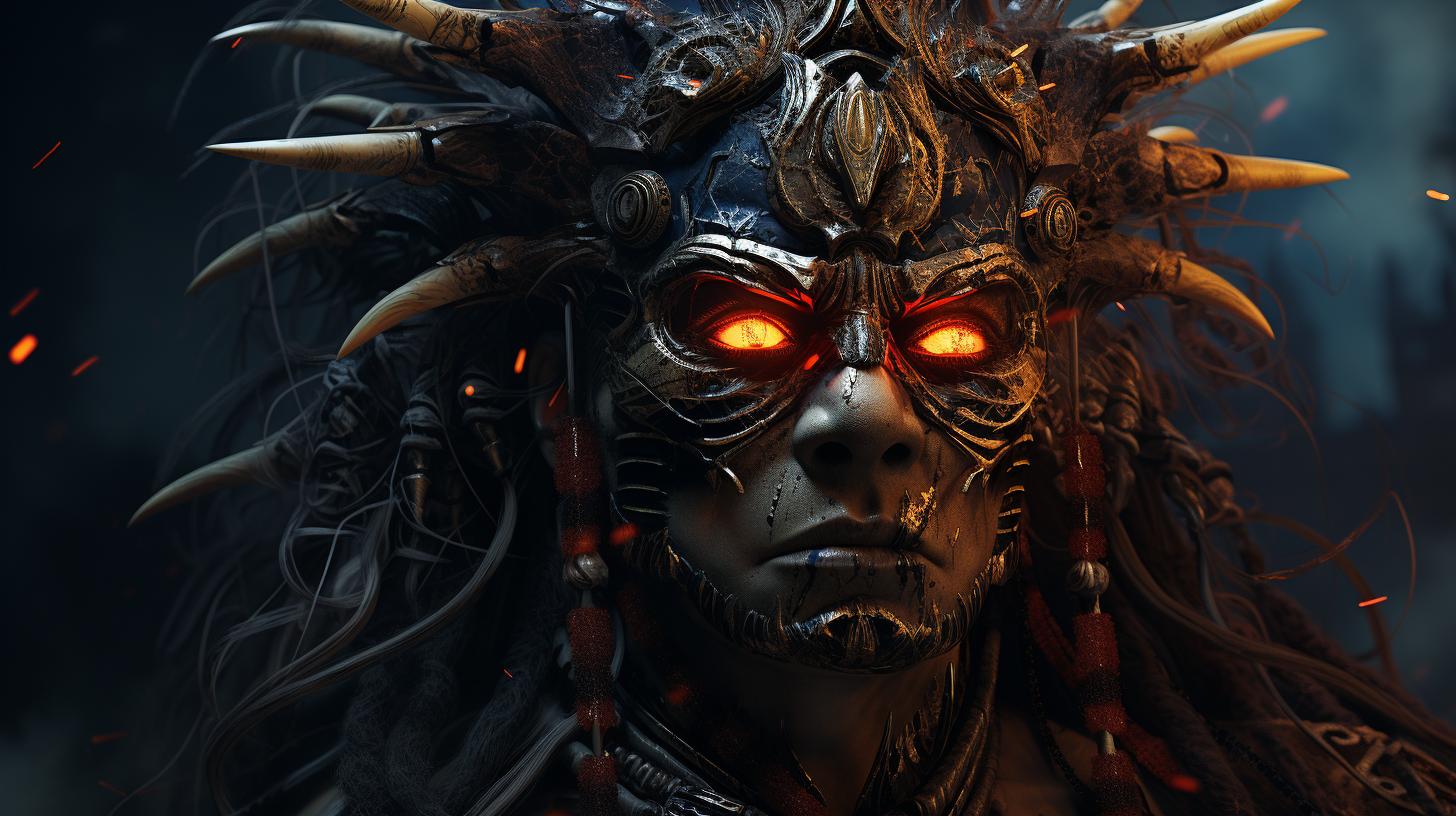Macuilxochitl Aztec God: The Divine Patron of Games and Festivities Embodied
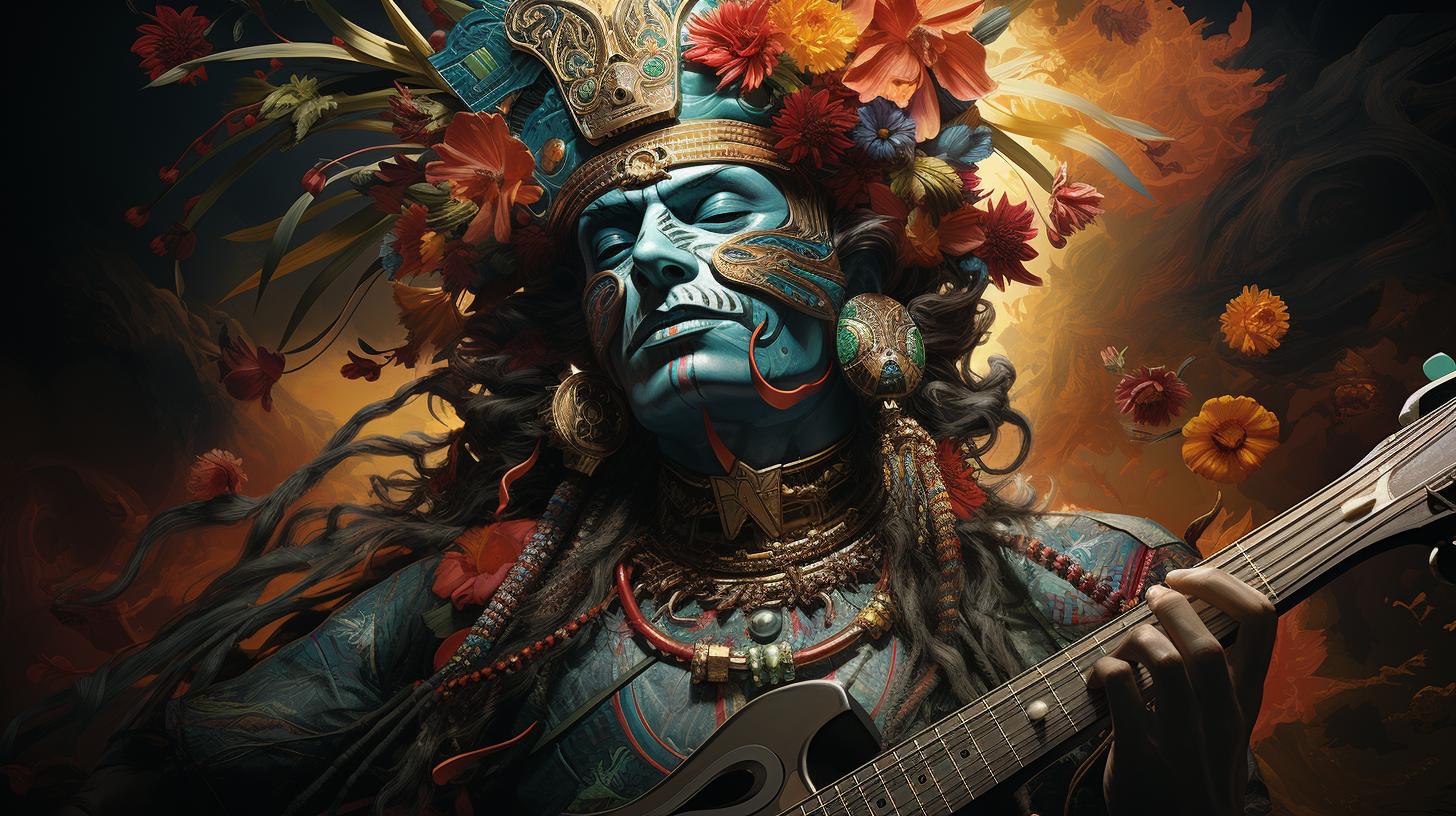
Macuilxochitl is a significant deity in Aztec religion and mythology, known as the god of games and festivities. He is depicted with red skin, a hand over his mouth, and a sharp stick piercing a human heart.
Other related deities include Xochipilli, the “Prince of Flowers,” and Ahuiateotl, the god of excess. Macuilxochitl’s associations include games, gambling, music, dance, writing, painting, flowers, and souls. Festivals like Tecuilhuitontli involved sacrifices and impersonating Xochipilli, while sculptures of Macuilxochitl can be found in archaeological sites.
Despite the decline of Aztec religion, Macuilxochitl’s legacy continues as a benevolent deity promoting joy and enjoyment of life.
The Deities of the Aztec Pantheon
Macuilxochitl and Other Aztec Gods
In the rich religious and mythological tradition of the Aztecs, several powerful deities held a significant place in their pantheon. Among these divine beings, Macuilxochitl, the god of games, played a prominent role.
However, he was not alone in the divine hierarchy. Various other Aztec gods and goddesses were revered and worshipped by the ancient civilization. These deities represented different aspects of life, nature, and human existence, each with their own unique symbols and attributes.
Ahuiateotl: The God of Excess
One such deity closely associated with Macuilxochitl is Ahuiateotl, known as the god of excess. Ahuiateotl and Macuilxochitl were both considered part of a group called the Ahuiateteo, the gods of excess.
Ahuiateotl symbolized indulgence, pleasure, and the uncontrolled aspects of human behavior. He represented the wild and untamed desires that often led individuals astray from the path of righteousness. While Macuilxochitl embodied the more joyful and celebratory aspects of human existence, Ahuiateotl served as a reminder of the potential dangers of excess.
Symbolism and Attributes of Macuilxochitl
The deity Macuilxochitl possesses rich symbolism and diverse attributes that define his significance in the Aztec pantheon. Understanding Macuilxochitl’s representation and iconography, as well as his associations and roles, provides insight into his cultural importance.
Macuilxochitl’s Representation and Iconography
Macuilxochitl is commonly depicted with distinct visual elements that symbolize his unique identity. His iconography includes:
- A red skin tone, symbolizing his vitality and association with blood, passion, and life force.
- A hand over his mouth, signifying secrecy and vigilance in relation to the divine mysteries.
- A sharp stick piercing a human heart, representing sacrifice and the divine connection to human experiences and emotions.
- Elaborate and vibrant clothing, adorned with feathers and intricate patterns that reflect his connection to beauty, festivity, and artistic expression.
Associations and Roles of Macuilxochitl
Macuilxochitl’s associations encompass a wide range of aspects within Aztec culture.
His roles and domains include:
- The god of games and gambling, representing the thrill of chance and the joy of competition.
- Patronage of music, dance, and festivities, showcasing his affinity for vibrant celebrations and performance arts.
- Protectorship of artists and musicians, inspiring creativity and artistic expression.
- Connections to sacred rituals and ceremonies, particularly those involving flowers, such as offerings during religious festivities.
- Involvement in various aspects of human life, such as the written word, painting, and even medical conditions like hemorrhoids.
- Association with souls and the afterlife, influencing beliefs and practices related to spiritual journeys.
Macuilxochitl’s multifaceted roles and attributes confirm his place as a significant entity that intersects with various aspects of Aztec society and spiritual beliefs, perpetuating his enduring cultural importance.
Festivals and Worship of Macuilxochitl
The worship of Macuilxochitl, the Aztec god of games and festivities, was centered around various festivals and rituals. These events were an important part of Aztec religious practices and were dedicated to honoring and appeasing the deity.
The two main aspects of Macuilxochitl’s worship were the Tecuilhuitontli festival and the offerings, rituals, and sacrifices performed in his honor.
Tecuilhuitontli: The Festival of Macuilxochitl
The Tecuilhuitontli festival, also known as the “Great Feast of Macuilxochitl,” was an annual celebration held in honor of the god. This festive event lasted for 20 days and took place in either February or March.
During this time, the Aztecs engaged in various activities that showcased their talents and entertained the deity.
The festival included an array of games and competitions, such as gambling and sports, which were believed to bring good luck and favor from Macuilxochitl.
Participants would place bets and take risks, as it was believed that the god rewarded those who embraced challenges. Music and dance performances were also an integral part of the festivities, with competitions highlighting the skills of musicians and dancers.
Moreover, the Tecuilhuitontli festival offered an opportunity for people to express their devotion to Macuilxochitl through elaborate ceremonies and processions. Participants would adorn themselves with colorful feathers and intricate costumes, paying homage to the god and seeking his blessings.
Offerings, Rituals, and Sacrifices
Aside from the Tecuilhuitontli festival, devotees of Macuilxochitl would offer various gifts and tributes to honor the god throughout the year. These offerings played a significant role in establishing a connection with the deity and seeking his favor.
Flowers held a special significance in the worship of Macuilxochitl. The Aztecs would present vibrant floral arrangements, especially those with five petals, symbolizing the deity’s association with Xochipilli, the “Prince of Flowers.”
The sight and scent of these blossoms were believed to please the god and invoke his blessings.
In addition to flowers, other items such as incense, food, and beverages were offered to Macuilxochitl in religious ceremonies.
Rituals involved the burning of incense and the chanting of prayers, accompanied by the rhythmic beats of drums and whistles, creating an immersive atmosphere of worship.
Sacrifices were also conducted as part of the worship of Macuilxochitl, though these practices varied in severity and significance.
Animal sacrifices, such as birds or small mammals, were offered to the god in grand ceremonies, symbolizing the devotees’ commitment and dedication.
In summary, festivals and worship dedicated to Macuilxochitl were vibrant and lively events that showcased the Aztecs’ devotion and reverence for the god of games and festivities.
Through various rituals, ceremonies, and competitions, the Aztecs sought to honor Macuilxochitl and secure his favor and blessings.
Macuilxochitl in Art and Archaeology
Macuilxochitl’s presence in art and archaeology provides valuable insights into the Aztec civilization and their reverence for this important deity. From sculptures to artifacts, the depictions of Macuilxochitl showcase the significance of this god in Aztec culture.
Sculptures and artifacts depicting Macuilxochitl have been discovered in various archaeological sites, shedding light on the intricate craftsmanship and symbolism associated with this deity. These artworks often depict Macuilxochitl adorned with elaborate clothing, feathered headdresses, and vibrant red body paint, showcasing his importance and status.
One notable sculpture of Macuilxochitl, possibly used in a temple dedicated to the deity or in a ball court, is made of basalt. Created between 1400 and 1520 near Matlala in Puebla, Mexico, this sculpture exemplifies the detailed artistry of the Aztec civilization.
It now resides in the Walters Art Museum after passing through various hands.
Aztec temples and ball courts were significant spaces for the worship of Macuilxochitl. In these sacred locations, the god’s presence was honored through rituals, ceremonies, and various artistic representations. The temples dedicated to Macuilxochitl served as focal points for devotion, while the ball courts were venues for games and competitions that paid homage to the god.
The integration of Macuilxochitl in Aztec temples and ball courts underscores the importance of this deity in both religious and societal aspects of Aztec life. The imagery and architectural features of these structures further exemplify the reverence and adoration the Aztecs had for Macuilxochitl as the patron of games, festivities, and artistic expression.
Legacy and Influence of Macuilxochitl
The figure of Macuilxochitl, the Aztec god of games and festivities, continues to have a significant legacy and influence in both modern Aztec culture and contemporary Mexican society. This deity’s multifaceted associations and attributes have left a lasting impact on various aspects of these cultures.
Macuilxochitl in Modern Aztec Culture
In modern Aztec culture, Macuilxochitl is revered as a powerful and benevolent deity who embodies the joy and celebration of life. While the traditional practices of the Aztec religion may have diminished, the spirit of Macuilxochitl remains present as a symbol of happiness and enjoyment.
The legacy of Macuilxochitl can be seen in the continuation of ancient rituals and festivals that celebrate the god’s essence. These events often feature music, dance, and games, reflecting the deity’s association with these activities.
Through these cultural practices, the influence of Macuilxochitl on modern Aztec society remains strong.
Macuilxochitl in Contemporary Mexican Society
Beyond the boundaries of the Aztec culture, the influence of Macuilxochitl can also be observed in contemporary Mexican society. The deity’s association with games, festivities, and dance has permeated Mexican culture, contributing to the vibrant and lively nature of various celebrations and traditions.
Macuilxochitl’s portrayal as a patron of artists and musicians has influenced the arts scene in Mexico. His connection to music and dance has inspired countless performances, both traditional and contemporary, that incorporate his spirit and energy.
Furthermore, Macuilxochitl’s association with good fortune and luck in games of chance has also influenced the gambling culture in Mexico. His image and symbolism often feature in casinos and gambling establishments, where individuals hope to invoke the god’s favor and win.
In summary, Macuilxochitl’s legacy as the Aztec god of games and festivities extends beyond the confines of ancient religious practices. His influence can be felt in the joyful celebrations of modern Aztec culture and the vibrant arts and entertainment scene in contemporary Mexican society.
As time passes, Macuilxochitl continues to inspire and bring happiness to those who embrace his spirit.
.

